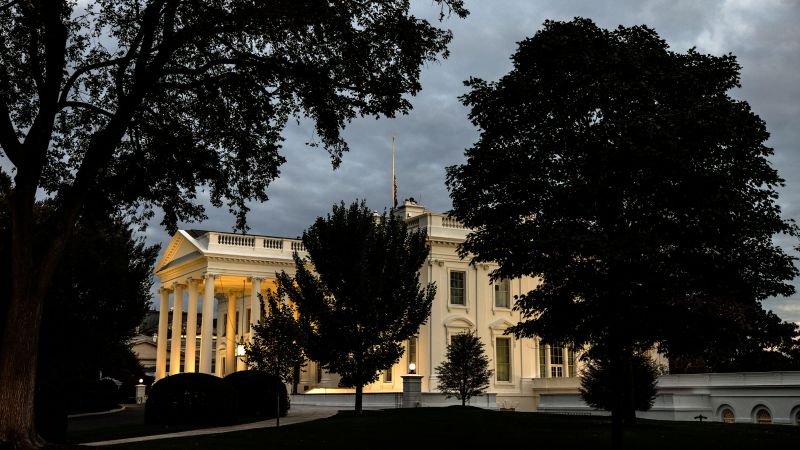deleted by creator
The problem though isn’t a lack of housing, we actually have plenty for everyone. The problem is corporations buying up homes to rent them and in the process jacking up home prices.
If all these newly made homes are left to the tender mercies of the market there won’t be a slew of new homeowners. Just more rentals.
Houses in the middle of Nebraska do not meaningfully help the housing market of New York City or San Francisco. Sure, I could go and buy a house in my hometown in bumfuck rural Missouri, but I don’t want to live in a homophobic conservative hellhole, so housing stock there isn’t really relevant to me in any way.
And if you look at a city like Seattle, where there actually has been meaningful construction, the pressure on renters has been way lower. Straight from the horses mouth:
The rise in vacancies across Seattle is directly linked to the rate of newly constructed apartments, according to Capital Economics, and it’s increased from 5.2% at the end of 2019 to 7% by midyear 2023. Already, Seattle’s asking rent growth rate is at -2% and could fall further. With that, the city’s apartment values will fall, and average annual total returns could become negative by 2027, meaning those properties are losing value as an asset and investment.
Here’s a London-based investment firm complaining about how housing in Seattle is becoming a bad investment due to increasing supply.
Not to mention, more rentals isn’t a bad thing! More rental units means fewer competition for each individual unit and ultimately cheaper rents. If you have 1000 people wanting to move to a city but there are only 500 open apartments, only the richest 500 people get to move. If you have 1200 open apartments, those landlords have to find a price that’ll get them a tenant or they’ll completely miss out on rents.
I completely agree with the sentiment that housing shouldn’t be treated as a productive investment asset, but the real question worth asking is why the market is so slanted towards landlords that housing can even serve as a productive asset in the first place. If you look at places like the Soviet Union or Communist China, they managed to house everyone easily because they build a metric fuckton of housing everywhere, so the questions of determining who gets housing and who gets to starve on the streets didn’t even apply.
It’s a supply issue. Essentially every economist agrees that it’s a supply issue. Evidence has shown time and time again that increasing supply lowers rent pressures. This is not a controversial question.
That’s amazing news about Seattle. It’s my dream to be able to afford to live there again one day
As of the last time a city government report was made on this just two years ago, over 61,000 homes were vacant in San Francisco. In answer to anyone who would write that off to pandemic effects, the number a few years before was around 40,000 homes sitting uninhabited. In San Francisco. Just sitting around being some well-off person or corporation’s investment, empty.
From some data I could find, the average one bedroom rent in January 2020 was $3050. From the same source, it’s currently around $2900. That 2020 number adjusted for inflation is $3600. So, rents seem to have both nominally and truly fallen.
I’d assume it’s largely due to lower demand because of remote work, since SF surely hasn’t been building anything. Thanks for the good example that increased vacancy does indeed lead to lower rents.
deleted by creator
I know you don’t care about evidence, but for anyone reading who does, here’s a study from Helsinki.
https://ideas.repec.org/p/fer/wpaper/146.html
We study the city-wide effects of new, centrally-located market-rate housing supply using geo-coded total population register data from the Helsinki Metropolitan Area. The supply of new market rate units triggers moving chains that quickly reach middle- and low-income neighborhoods and individuals. Thus, new market-rate construction loosens the housing market in middle- and low-income areas even in the short run. Market-rate supply is likely to improve affordability outside the sub-markets where new construction occurs and to benefit low-income people.
Turns out there may be a meaningful difference between randomly cutting taxes from businesses and building a bunch of new housing.
deleted by creator
Seattleite here. We also focused on supply side housing issues. We passed a ballot initiative last year that allows the city to establish its own housing developer which will compete with capital to build public housing.
It’s a supply side issue AND a capitalist greed issue. Don’t listen to this person.
deleted by creator
The paper came out before that investigation was opened, so unless the paper is wrong, you’re probably wrong.
deleted by creator
I’m in agreement. Also in Seattle. The median house price in Seattle is over $800,000. Down a whopping 2%. This means you’d have to make over 200k a year to afford your mortgage. How many more apartment units will trickle this down the other 50% or 75% to make it affordable to everyone? People need to be realistic. Bans on for-profit home ownership need to be part of the mix here, not just more supply.
Not everyone wants to own, even when housing was affordable there was still a bit more than 30% renting.
At the point we’re at there’s more competition to own because renting is so expensive that it’s way more logical to purchase, flood the rental market to crash prices there and people won’t buy at a ridiculous price, they’ll simply rent instead, lowering pressure in the whole market.
It’s one of the many ways to lower prices!
deleted by creator
I’ve got similar ideas!
One to four units can only be privately owned, 5 to 8 units can only be owned by a registered company, more than that must be run as a non profit (ideally a state corporation).
People are only allowed to own one property in a 50km radius (meaning that if you own a 4 unit you pretty much have to live in it unless you live in the next city over).
deleted by creator
Disagree with what you’re saying though there is some truth in what you’re saying: We’re low on supply on housing in major business areas, because we haven’t kept up with house manufacturing for like 20+ years. If we just allow developers to build what they like, yeah they’ll mainly aim for luxury apartments/condos which only the rich will be able to afford. There will be strong resistance from the landlords to drop the property/rent value since the property is constructed to be more luxurious, so we’d need a ton of those luxury homes before medium and low income homes get built or become available (through price drops). That’s why, governments need to require some low income/median income offered units to help house more people with these new units until supply catches up or some other way to ensure that lower income people (non-rich) are able to afford homes.
Overall, making more homes is the ultimate solution to our low supply problem, we can argue of better ways to make more homes, get more average/median people housed, and decrease living costs, while we make new homes. Otherwise, we’ll be here arguing about what to do, and letting the problem continue to fester instead of refining imperfect solutions.
deleted by creator
Well it is both, suburban hell doesn’t scale up, it’s meant to be exclusionary.
deleted by creator
Yup. This shit needs to be illegal nationwide. They literally encourage vacancies in order to keep pricing going upward and coordinate pricing in order to keep profits maximized. It’s gross and these fucks should be vilified.
deleted by creator
deleted by creator
deleted by creator
deleted by creator
Location is a major issue. A lot of empty housing stock is in places no one wants to live in anymore. There is a lack of housing in high demand areas. There’s no silver bullet, but converting commercial real estate in those high demand areas is ideal to add useful housing.
But yes, corporations sucking up residential real estate needs to be tackled just the same.
It’s like diamonds but you need them to live.
To say nothing of the massive expense of remodeling those commercial properties to actually work as residential. When it comes to the big multistory buildings in the larger cities that need it most, the plumbing alone would be a nightmare, along with splitting up all the electric service so individual usage can be metered. And then you have to gut and rebuild the interiors to split everything up and still have proper fire code compliance.
I love the idea and I hope it gains traction but logistically and financially there are some tall hurdles to overcome to implement this properly.
I hope they work on fucking the investment property market as well.
I’ve said for a while that vacancy taxes should be extremely painful. Like 10% of the land/structure value per month, increasing 2% every month after that.
They’re gonna need to because ‘Hey corporate land owner, were gonna make all this residentia’ is gonna scare a lot of rich people. Which would be fine if we didn’t run a market economy that collapsed if rich people get scared.
Fine you won’t return to the office from WFH, we’ll make the office the home, checkmate employee!
This is great! I’m glad it includes provisions for changing zoning laws, that seems to be a major reason for housing shortage in many areas.
deleted by creator
Sure, that’s a factor that needs to be considered, but another factor that needs to be considered is the value of the land itself. You can build cheap housing out in the middle of nowhere all you want, but it doesn’t matter how cheap it is if there are no jobs to pay for the housing and no services to get stuff like groceries conveniently.
Converting commercial properties to residential is certainly more expensive upfront, but it creates more housing where it actually is needed AND wanted, cities and suburbs.
You pretty much have to strip the interior ripping everything out for a modern office. So no your not of base. But they do turn old warehouses and buildings into apartments and lofts in cities fairly often though.
This is the best summary I could come up with:
The Biden administration announced new steps Friday to ensure access to affordable housing, launching a slew of resources to convert high-vacancy commercial buildings to residential use.
The effort is an attempt to address what the administration says is a dearth of much-needed, affordably priced, conveniently located and energy-efficient homes.
As part of Friday’s announcement, the Department of Transportation will release new guidance on more than $35 billion in lending available for transportation-oriented development projects.
According to a fact sheet shared with CNN ahead of the announcement, the administration estimates the guidance “will increase housing supply, while encouraging state and local governments to improve their zoning, land use and transit-oriented development policies.”
“The pandemic really changed the patterns of how many Americans work and live and commute, and right now, across the country, we’re seeing decades-high levels of office vacancies in many downtowns, while at the same time, many of America’s cities and towns face a steep shortage of housing, and families are struggling to afford housing and transportation,” Transportation Secretary Pete Buttigieg told reporters on a call previewing the announcement Thursday.
HUD will begin accepting applications for $85 million in funding through the Pathways to Removing Obstacles to Housing program, which makes money available for the development of adaptive reuse strategies and the financing of conversions.
The original article contains 568 words, the summary contains 216 words. Saved 62%. I’m a bot and I’m open source!








